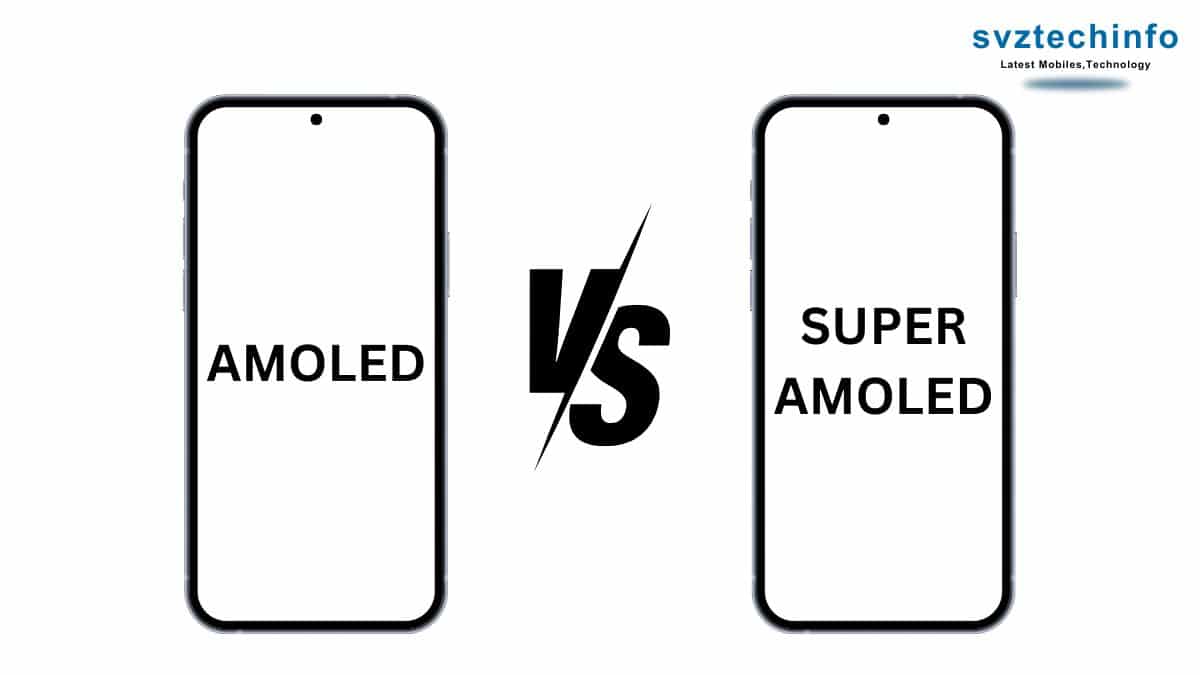HIGHLIGHTS
- Introduction about amoled and super AMOLED
- In this article, we see the key difference between AMOLED and super AMOLED technologies

It is the generation of growing technologies of mobile and television industries which come with faster speed and high graphics as per the need of today’s world. Display is an important term when we discuss mobile and television because the display is the main part of the device that shows all data, information, applications, etc with high graphics and makes our experience good with these electronic devices.
AMOLED and Super AMOLED are display technologies used in Mobile devices and televisions. In this article, we explore AMOLED & super AMOLED display technologies.
Table of Contents
AMOLED
The full form of AMOLED is Active-Matrix Organic Light Emitting Diode. Essentially, it is screen technology that falls under the category of active-matrix technology in which a thin film transistor is used in conjunction with an OLED system. The active-matrix component is one that consists of a TFT array that turns on and off the pixel to emit light. This configuration fasters the vivid graphics in AMOLED displays, though it is not very power-hungry. The opposite is an organic light-emitting diode in that the display of the device uses organic materials which emit light to a surface upon passing an electric current through it.
Super AMOLED
AMOLED is a relatively newer technology and Super AMOLED is even more advanced. In this case, the ‘super’ means that the touch-sensitive layer is embedded right in the screen not being an additional layer. In addition to creating a thinner gadget, this integration enhances touch screen sensitivity while decreasing the power use.
Difference Between AMOLED and Super AMOLED
| Features | AMOLED | Super AMOLED |
| Full-Form | Active-Matrix Organic Light Emitting Diode | Super Active-Matrix Organic Light Emitting Diode |
| Technology Used | Technology Used In realising its function, it employs organic compounds that glow when electric current is passed through. | It is a refined form of AMOLED which entails placing touch sensors onto the actual screen without the use of a connection cable. |
| Integration | Separate touch-sensitive layer on top of the display | Touch-sensitive layer is integrated within the display itself |
| Brightness | Moderate brightness | Higher brightness, better visibility in direct sunlight |
| Power | Generally higher than Super AMOLED | More power-efficient due to integrated touch layer |
| Thickness | Thicker due to separate touch layer | Thinner because of integrated touch layer |
| Colour | Vibrant colours | Improved colour accuracy and saturation |
| Touch Response | Slightly less responsive due to separate touch layer | More responsive due to integrated touch layer |
| Contrast | High contrast ratio | High contrast ratio |
| View Angles | Wide viewing angles | improved wide viewing angles |
| Readability in Sunlight | Adequate, can be difficult under direct sunlight | Enhanced readability under direct sunlight |
| Durability | Standard durability | Often more durable due to fewer layers and better integration |
| Devices | Normally used in many smartphones, TVs, and other displays | Normally used in high-end smartphones and devices |
Smartphones Come with AMOLED Displays
- Samsung Galaxy A15 5G
- Samsung Galaxy F54 5G
- Samsung S24 Ultra
- Samsung Galaxy Z Flip 6 5G
- Samsung Galaxy A73 5G
Smartphones Comes with Super AMOLED Displays
- Samsung Galaxy A33 5G
- Samsung Galaxy A53 5G
- Samsung Galaxy M34
- Samsung Galaxy F55
- Samsung Galaxy A55
Conclusion:
As the display plays a important role to make a good experience for user with its high quality content and graphics. Mostly companies working on their displays to make it best and Samsung is the best among them for their phones and television displays. They provide best AMOLED and super AMOLED display technologies for the users. In this article we explain about AMOLED and super AMOLED with smartphones comes with these type of displays.


